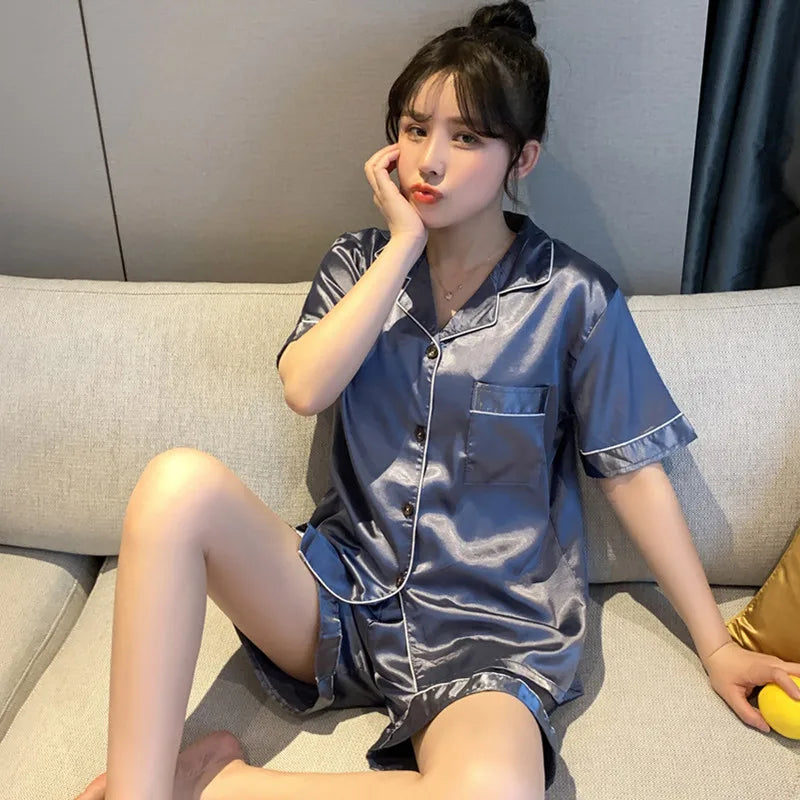How to Print on a Onesie: A Complete Guide for Custom Creations
Table of Contents
- Introduction
- Understanding Onesies: More Than Just Babywear
- Choosing the Right Printing Method
- Steps to Print on a Onesie
- Creative Ideas for Custom Onesies
- Conclusion
- FAQ
Introduction
Have you ever wondered how to transform a simple onesie into a unique piece of art that reflects your personality or style? Custom onesies are not just for babies anymore; they have become popular among adults as well, especially in the realm of personalized gifts or creative expressions. Whether it’s for a baby shower, a family photo shoot, or just for fun, knowing how to print on a onesie opens up a world of creativity.
In recent years, the market for custom clothing has seen significant growth, with more people looking to express themselves through unique designs. According to recent statistics, the custom apparel market is expected to grow by 9.7% annually, reaching a value of over $5 billion in the next few years. This trend highlights the increasing demand for personalized items, making it the perfect time to learn how to print on onesies effectively.
In this blog post, we will explore everything you need to know about printing on onesies, from the materials required to the various printing techniques available. By the end, you’ll be equipped with the knowledge to create your own custom onesies, whether for personal use or as a business venture. We will also provide insights into the advantages of high-quality fabric, like those found in our Relaxed Nights nightwear collection, and how they can enhance your printing experience.
Let’s dive into the world of custom onesies, where comfort meets creativity!
Understanding Onesies: More Than Just Babywear
The Versatility of Onesies
Onesies are one of the most versatile clothing items available. Initially designed for infants, these one-piece garments have evolved to cater to adults as well, often being used for loungewear or cozy pajamas. At Relaxed Nights, we believe that everyone deserves to feel comfortable and stylish, and our collection of onesies reflects this philosophy.
Onesies are available in various styles, sizes, and fabrics, making them suitable for a wide range of occasions. They can be dressed up or down, and their simplicity allows for endless customization options, which is why they make perfect canvases for printing.
Fabric Matters: Why Quality Counts
Before printing on a onesie, it’s essential to consider the fabric. The quality of the material can significantly impact the final product. High-quality fabrics not only feel better against the skin but also hold prints more effectively, ensuring longevity and vibrancy.
At Relaxed Nights, our onesies are crafted from premium materials that are soft, breathable, and durable. This means that when you print on our onesies, the designs will not only look great but will also withstand the test of time. Choosing the right fabric is crucial, so let’s discuss some options:
- Cotton: Known for its softness and breathability, cotton is a popular choice for onesies. It’s easy to print on and provides a comfortable wear.
- Polyester: This synthetic fabric is durable and often used for athletic wear. It holds colors well and is less prone to shrinking.
- Cotton-Poly Blends: Combining the best of both worlds, these blends offer comfort and durability, making them a great choice for printed designs.
By selecting high-quality fabric, you ensure that your printed designs will look vibrant and last longer, enhancing the overall value of your custom onesies.
Choosing the Right Printing Method
Now that we understand the importance of fabric, let’s explore the various printing methods available for onesies. Each technique has its advantages and is suited to different types of designs.
1. Screen Printing
Screen printing is one of the most popular methods for printing on fabric. It involves creating a stencil (or screen) and using it to apply layers of ink onto the fabric. Here are some pros and cons of screen printing:
Pros:
- Durability: Screen-printed designs are known for their longevity.
- Vibrant Colors: This method allows for bright and vivid colors.
- Cost-Effective for Bulk: Ideal for large orders, as the setup cost is spread across multiple items.
Cons:
- Setup Time: It requires more time for setup compared to other methods.
- Limited Color Range: The more colors used, the more screens are required, which can increase costs.
2. Heat Transfer Printing
Heat transfer printing involves printing your design onto a special paper and then using heat to transfer it onto the fabric. This method is great for intricate designs and photographs.
Pros:
- Detail: Capable of printing detailed images and complex designs.
- Cost-Effective for Small Runs: Ideal for one-off designs or small batches.
Cons:
- Durability: Heat transfer prints may not last as long as screen prints, especially after multiple washes.
- Feel: It can create a slightly raised texture on the fabric.
3. Direct-to-Garment (DTG) Printing
DTG printing is a newer technology that allows for high-quality prints directly onto the fabric. It’s similar to using an inkjet printer for paper.
Pros:
- Unlimited Colors: You can use as many colors as you like without extra costs.
- Soft Feel: The ink penetrates the fabric, resulting in a soft finish.
Cons:
- Cost: Generally, it’s more expensive than other methods for bulk printing.
- Limited Fabric Options: Works best on cotton or cotton-rich blends.
4. Vinyl Cutting
Vinyl cutting involves using a machine to cut out shapes and designs from colored vinyl, which is then heat-pressed onto the fabric.
Pros:
- Durability: Vinyl prints are known for their strength and long-lasting quality.
- Glossy Finish: Provides a unique texture and shine to the designs.
Cons:
- Limited Detail: Not ideal for very intricate designs with fine details.
- Layering Difficulty: Multiple layers can become bulky and less flexible.
Steps to Print on a Onesie
Now that we’ve covered the basics of printing methods, let’s walk through the steps to print on a onesie, ensuring you achieve the best results.
Step 1: Design Your Artwork
Start by creating a design that reflects your style or the message you want to convey. Use graphic design software like Adobe Illustrator or free tools like Canva to create your design. Keep in mind the following tips:
- Resolution: Ensure your design is high resolution (at least 300 DPI) for clear printing.
- Color Mode: Use CMYK color mode for printing, as it provides more accurate color representation.
- Size: Measure the onesie and determine the optimal size for your design.
Step 2: Choose Your Printing Method
Based on your design and the fabric of the onesie, select the printing method that best suits your needs. Consider factors such as cost, durability, and the intricacy of your design.
Step 3: Prepare the Onesie
Before printing, wash and dry the onesie to remove any factory residues or chemicals that might affect the print. Iron it to eliminate any wrinkles, ensuring a smooth printing surface.
Step 4: Print Your Design
Depending on the method chosen, follow the specific instructions for that technique:
- For Screen Printing: Set up your screens, mix your ink, and carefully press your design onto the onesie.
- For Heat Transfer: Print your design on transfer paper, cut it out, and use a heat press to transfer it onto the fabric.
- For DTG: Load the onesie into the DTG printer, and print your design directly onto the fabric.
- For Vinyl Cutting: Cut your design from vinyl, weed out the excess material, and heat press it onto the onesie.
Step 5: Cure the Print
After printing, it’s essential to cure the ink properly. This step ensures the design adheres well to the fabric and increases its durability. Follow the curing instructions specific to your printing method, such as heat curing for screen printing or allowing the transfer to cool for heat transfer prints.
Step 6: Care for Your Printed Onesie
To maintain the vibrancy and quality of your printed onesie, follow these care instructions:
- Wash inside out to protect the print.
- Use cold water and mild detergent.
- Avoid bleach and fabric softeners, which can damage the print.
- Air dry or tumble dry on low heat.
Creative Ideas for Custom Onesies
Now that you know how to print on a onesie, it’s time to unleash your creativity! Here are some fun ideas for designs you might consider:
- Personalized Baby Shower Gifts: Create unique onesies with the baby’s name or a cute saying.
- Family Reunion Attire: Design matching onesies for family gatherings or events.
- Fun Holiday Themes: Print festive designs for holidays like Christmas or Halloween.
- Custom Outfits for Photoshoots: Make onesies that match specific themes for memorable family photos.
- Cute Phrases and Sayings: Use humor or inspirational quotes to create fun and light-hearted designs.
Conclusion
Custom printing on onesies is a fantastic way to express creativity, celebrate special occasions, or even start a small business. By understanding the various printing methods and selecting high-quality fabrics, you can create beautiful, lasting designs that will be cherished for years to come.
At Relaxed Nights, we believe that comfort and elegance should go hand-in-hand, and our premium nightwear collection, including cozy onesies, embodies this philosophy. Whether you’re crafting a personalized gift or starting a new venture, remember that the right materials and techniques will make all the difference in your final product.
So, are you ready to embark on your onesie printing journey? Gather your materials, unleash your imagination, and let’s create something beautiful together!
FAQ
Q: What type of fabric is best for printing on a onesie?
A: Cotton and cotton-poly blends are ideal as they are soft, breathable, and provide excellent print quality.
Q: Can I print on a onesie at home?
A: Yes, with the right equipment (like a heat press or a DTG printer), you can print on a onesie at home.
Q: How do I ensure my printed design lasts?
A: Proper care is essential; wash inside out in cold water and avoid bleach to maintain the vibrancy of your print.
Q: What is the most cost-effective printing method for small batches?
A: Heat transfer printing is often the most cost-effective for small runs or individual designs.
Q: Where can I buy high-quality onesies for printing?
A: You can find high-quality onesies at stores specializing in custom apparel or check out our Relaxed Nights collection for premium options.



